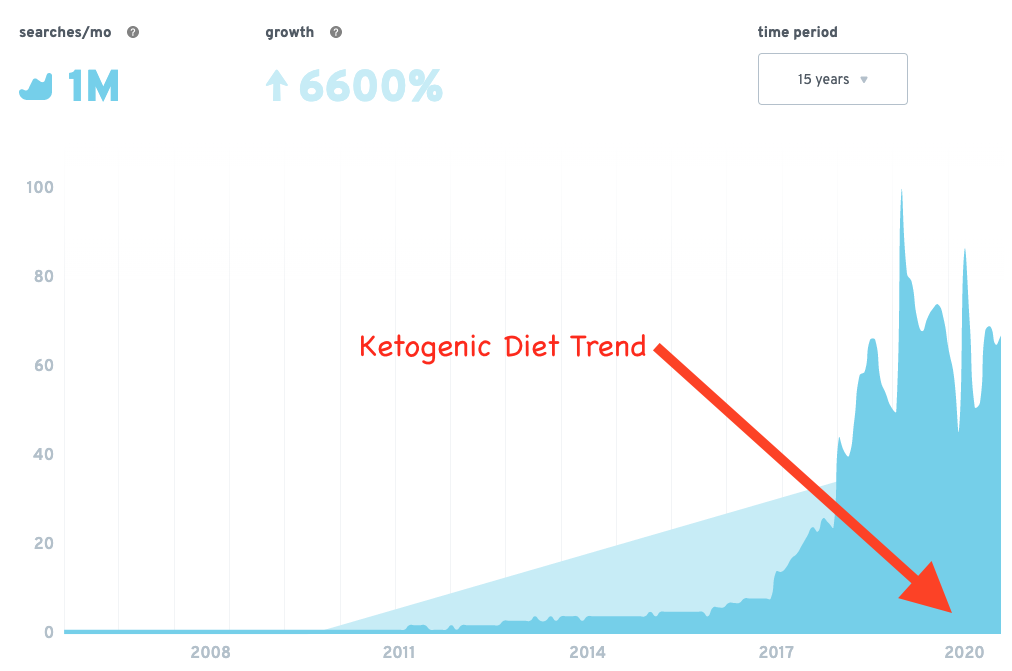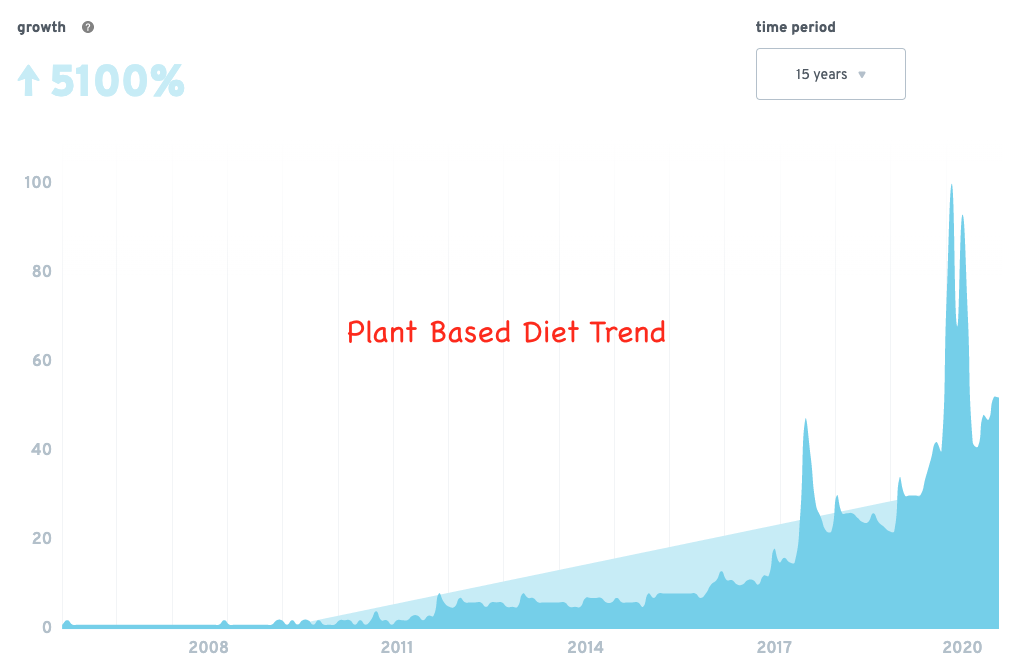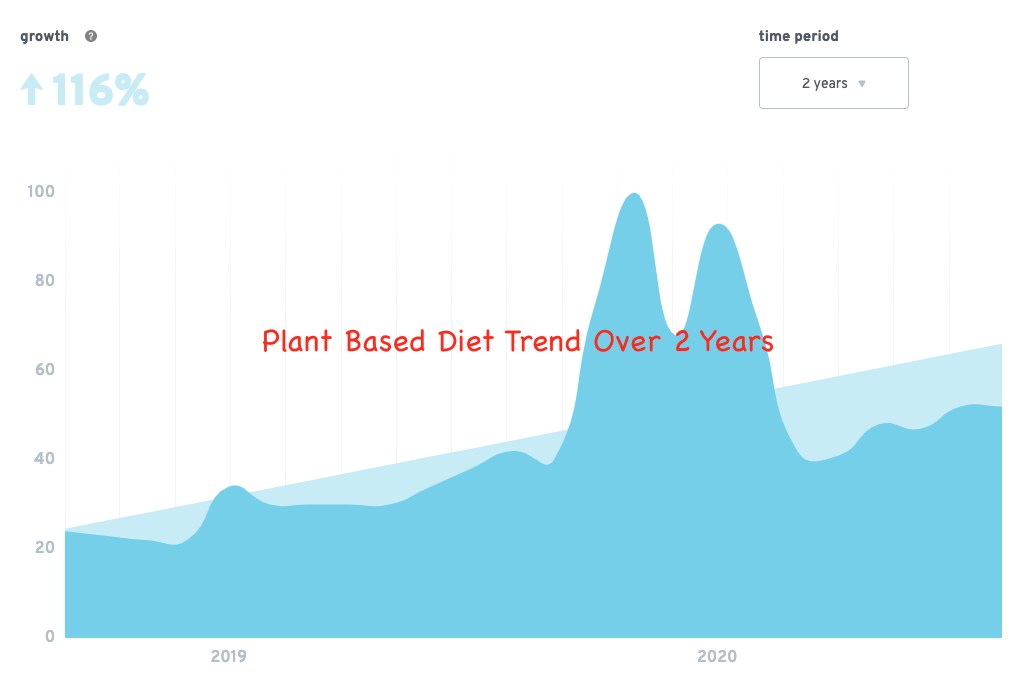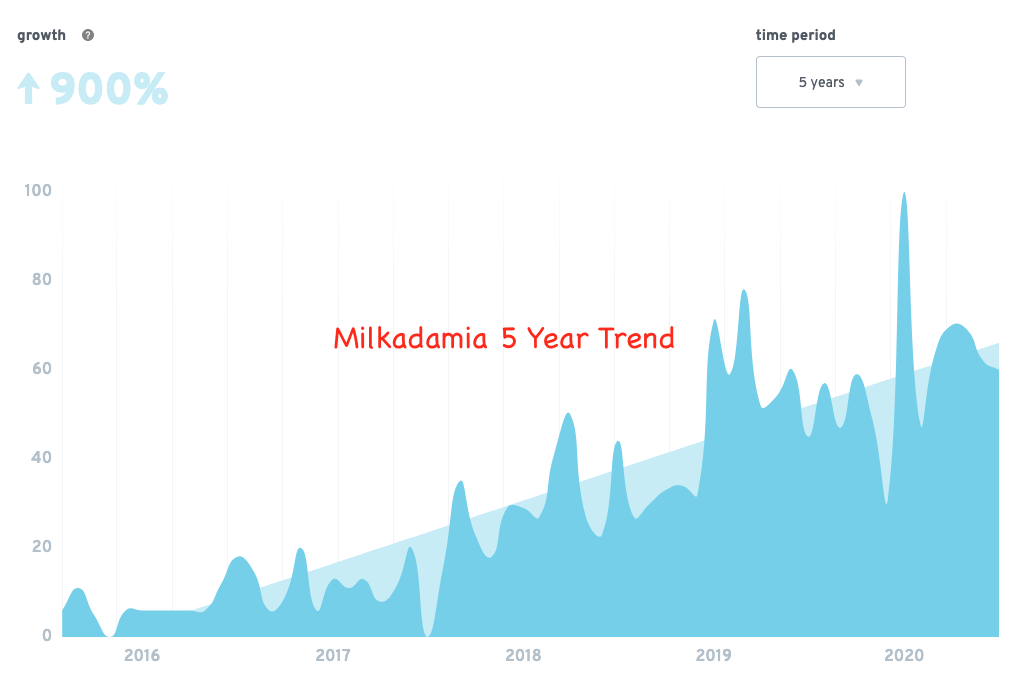The vitamin market is constantly changing.
From vegan protein and plant-based diets, to milk alternatives there seems to be a new fad every month.
But what are the larger trends that will be shaping the diet vitamin market for years to come?
It wasn’t too long ago that keto was leading the pack. And certainly it’s rise over the last 15 years is incredible.
The ketogenic diet is a high-fat, adequate-protein, low-carbohydrate diet that forces the body to burn fats rather than carbohydrates.
The graph below shows the growth by search volume of a 6,600% increase over 15 years.

When compared to the vitamin market of plant-based diets they are in the same ballpark.
A plant-based diet is a diet consisting mostly or entirely of foods derived from plants, including vegetables, grains, nuts, seeds, legumes and fruits, and with few or no animal products, not necessarily vegetarian.
Plant-based diet has a 5,100% growth trend over the same 15 year spread.

Both took off at the tail end of 2017.
But if we zoom in and look at each growth curve for the last 2 years, we can clearly see a shift that’s happening in the vitamin market.
Below is the same keto trend but for the last 2 years.

It’s pretty flat. But still has a growth rate of 17%
Now let’s look at how plant-based diet is doing over the same 2 year timeframe.

Clearly the plant based diet trend is winning. It’s on an upward trajectory for the last 2 years and growing at 116% compared to the 17% growth rate of keto over the same time frame.
The vitamin market big picture
The bigger picture that we’re seeing at Creative Thirst is a bigger need for alternative protein.
Perhaps the keto dieters are getting tired of eating animal protein or they are getting into ketosis via vitamin supplements and yet still need protein. In all honesty it’s probably a shift in the preferences of the vegan marketplace.
Regardless, some interesting things are uncovered when we zoom in further into the alternative protein trend.
It’s evident if we look into some of the sub trends that have emerged. All of them support this movement toward a plant-based diet.
For example, take a look at the chart below.

Pea protein is a form of protein powder extracted from yellow peas.
What’s driving this market is vegans looking for new vegan-friendly alternatives to whey protein powder.
But make no mistake, this niche is quickly turning into a growing, mainstream industry. A recent report by Fact MR estimates that the pea protein industry will be worth $3B within the next 10 years.
What’s driving it may be more science than preference however.
The current go-to vegan protein source, soy, may not be healthy to eat every day. Which may be the reason why vegans are replacing their daily soy protein shake with the alternative pea protein.
The growth of pea protein is part of the “Veganification” of everything metatrend.
An extension of the plant-based trend. Which includes vegan jerky, vegan collagen and vegan ramen and even pea milk just to name a few.

The alternative milk market is also an interesting one to keep an eye on as it plays into the whole vitamin market.
Just take a look at the milkadamia trend as an example.

Milkadamia is a brand of plant milk made from macadamia nuts.
Macadamia nut milk checks off a number of boxes that are important for a growing number of consumers:
It’s vegan, gluten free, dairy free, plant-based and sustainable regenerative agriculture.
The trend started back in the day with almond and soy milk. But has recently expanded into dozens of new categories. Other examples of this meta trend include pea milk, oat milk, coconut milk, and cashew milk.
What’s next for the vitamin market
Who knows exactly what’s ahead for the vitamin market as a whole.
But one thing that’s clear is that the growth is in the sub niches. Following the trends on the marketplace is a great way to stay on top of where it market is going but it’s not enough. Going deeper into the subindices that are an outcome of the bigger vitamin market trends is the best way to stay ahead of the curve.
Discover the 3 funnels that can help your health supplement business succeed.

Listen to the Health Supplement Business Mastery Podcast for for dietary supplement entrepreneurs and marketers.



